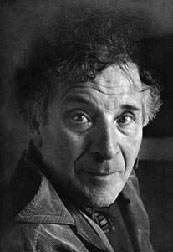Marc Chagall
(Witebsk (Weissrussland) 1887 - 1985 Saint-Paul-de-Vence)

In 1907–1910, Chagall studies at the Academy in Saint Petersburg and with Léon Bakst. In 1910, he moves to Paris, where, in 1911, he exhibits work in the Salon des Indépendants and the Salon d’Automne. He becomes friends with Guillaume Apollinaire. In 1914, he has a solo exhibition at Herwarth Walden’s gallery “Der Sturm” in Berlin. He studies Robert Delaunay’s Orphic Cubism. Having spent the years of World War I in Russia, he becomes director of the Vitebsk Art School in 1919. In 1920–22, he is in Moscow, working at the Jewish Theater. In 1923, he returns to Paris. Having emigrated to the U.S. (New York) in 1941, he is back in Paris in 1947, settling in Vence in 1950. He continues working as a painter, stained-glass artist, creator of wall and ceiling paintings, and book illustrator for the rest of his long life.In 1907–1910, Chagall studies at the Academy in Saint Petersburg and with Léon Bakst. In 1910, he moves to Paris, where, in 1911, he exhibits work in the Salon des Indépendants and the Salon d’Automne. He becomes friends with Guillaume Apollinaire. In 1914, he has a solo exhibition at Herwarth Walden’s gallery “Der Sturm” in Berlin. He studies Robert Delaunay’s Orphic Cubism. Having spent the years of World War I in Russia, he becomes director of the Vitebsk Art School in 1919. In 1920–22, he is in Moscow, working at the Jewish Theater. In 1923, he returns to Paris. Having emigrated to the U.S. (New York) in 1941, he is back in Paris in 1947, settling in Vence in 1950. He continues working as a painter, stained-glass artist, creator of wall and ceiling paintings, and book illustrator for the rest of his long life.
See also: Letters in the archive of the Im Obersteg Foundation